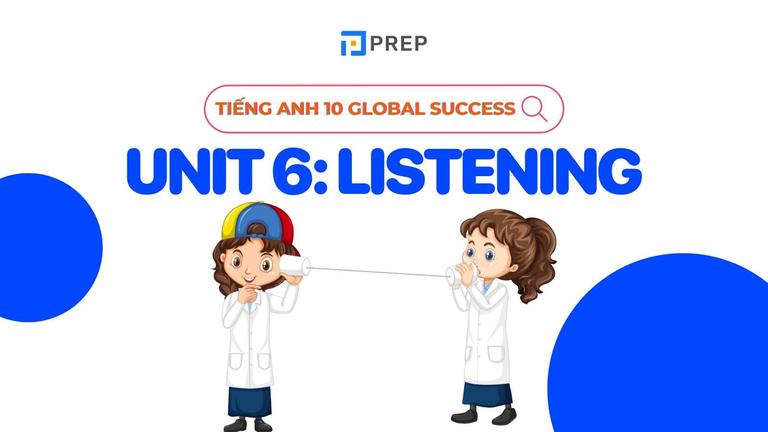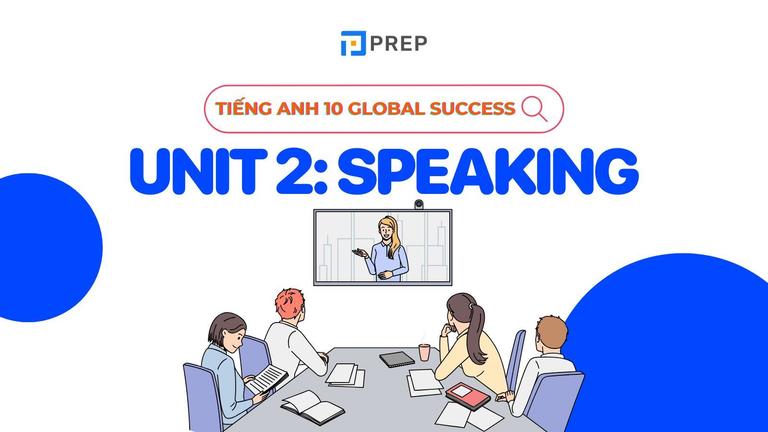Giải đề Cambridge IELTS 16 Reading Passage 3: How to make wise decisions
Bài đọc How to make wise decisions là một trong những bài đọc hay của cuốn Cambridge 16, Test 4. How to make wise decisions giới thiệu hai hệ thống tư duy: System 1 (nhanh, trực giác) và System 2 (chậm, lý trí). Bài viết này sẽ phân tích chi tiết cấu trúc bài đọc, cung cấp đáp án chính xác và giải thích chi tiết đáp án để bạn luyện tập, cùng Prep khám phá nhé!

I. Đề bài How to make wise decisions
Bài đọc này phân tích hai cách con người đưa ra quyết định:
-
System 1: Tư duy nhanh, dựa trên trực giác và cảm xúc. Nó hoạt động tự động và không tốn nhiều công sức.
-
System 2: Tư duy chậm, có ý thức, đòi hỏi sự tập trung và logic. Đây là hệ thống chúng ta dùng khi giải quyết các vấn đề phức tạp.
How to make wise decisions
Across cultures, wisdom has been considered one of the most revered human qualities. Although the truly wise may seem few and far between, empirical research examining wisdom suggests that it isn’t an exceptional trait possessed by a small handful of bearded philosophers after all – in fact, the latest studies suggest that most of us have the ability to make wise decisions, given the right context.
‘It appears that experiential, situational, and cultural factors are even more powerful in shaping wisdom than previously imagined,’ says Associate Professor Igor Grossmann of the University of Waterloo in Ontario, Canada. ‘Recent empirical findings from cognitive, developmental, social, and personality psychology cumulatively suggest that people’s ability to reason wisely varies dramatically across experiential and situational contexts. Understanding the role of such contextual factors offers unique insights into understanding wisdom in daily life, as well as how it can be enhanced and taught.’
It seems that it’s not so much that some people simply possess wisdom and others lack it, but that our ability to reason wisely depends on a variety of external factors. ‘It is impossible to characterize thought processes attributed to wisdom without considering the role of contextual factors,’ explains Grossmann. in other words, wisdom is not solely an “inner quality” but rather unfolds as a function of situations people happen to be in. Some situations are more likely to promote wisdom than others.’
Coming up with a definition of wisdom is challenging, but Grossmann and his colleagues have identified four key characteristics as part of a framework of wise reasoning. One is intellectual humility or recognition of the limits of our own knowledge, and another is appreciation of perspectives wider than the issue at hand. Sensitivity to the possibility of change in social relations is also key, along with compromise or integration of different attitudes and beliefs.
Grossmann and his colleagues have also found that one of the most reliable ways to support wisdom in our own day-to-day decisions is to look at scenarios from a third-party perspective, as though giving advice to a friend. Research suggests that when adopting a first-person viewpoint we focus on ‘the focal features of the environment’ and when we adopt a third-person, ‘observer’ viewpoint we reason more broadly and focus more on interpersonal and moral ideals such as justice and impartiality. Looking at problems from this more expansive viewpoint appears to foster cognitive processes related to wise decisions.
What are we to do, then, when confronted with situations like a disagreement with a spouse or negotiating a contract at work, that require us to take a personal stake? Grossmann argues that even when we aren’t able to change the situation, we can still evaluate these experiences from different perspectives.
For example, in one experiment that took place during the peak of a recent economic recession, graduating college seniors were asked to reflect on their job prospects. The students were instructed to imagine their career either ‘as if you were a distant observer’ or ‘before your own eyes as if you were right there’. Participants in the group assigned to the ‘distant observer’ role displayed more wisdom-related reasoning (intellectual humility and recognition of change) than did participants in the control group.
In another study, couples in long-term romantic relationships were instructed to visualize an unresolved relationship conflict either through the eyes of an outsider or from their own perspective. Participants then discussed the incident with their partner for 10 minutes, after which they wrote down their thoughts about it. Couples in the ‘other’s eyes’ condition were significantly more likely to rely on wise reasoning- recognizing others’ perspectives and searching for a compromise- compared to the couples in the egocentric condition.
‘Ego-decentering promotes greater focus on others and enables a bigger picture, conceptual view of the experience, affording recognition of intellectual humility and change,’ says Grossmann.
We might associate wisdom with intelligence or particular personality traits, but research shows only a small positive relationship between wise thinking and crystallized intelligence and the personality traits of openness and agreeableness. ‘It is remarkable how much people can vary in their wisdom from one situation to the next, and how much stronger such contextual effects are for understanding the relationship between wise judgment and its social and affective outcomes as compared to the generalized “traits”,’ Grossmann explains. ‘That is, knowing how wisely a person behaves in a given situation is more informative for understanding their emotions or likelihood to forgive [or] retaliate as compared to knowing whether the person may be wise “in general”.’

Xem thêm: Review sách Cambridge 16 chi tiết & cách luyện đề hiệu quả
II. Đáp án bài đọc
Các dạng câu hỏi trong bài đọc bao gồm:
-
Matching Headings (Q.27-32): Dạng bài yêu cầu tìm tiêu đề phù hợp cho mỗi đoạn văn.
-
Multiple Choice Questions (Q.33-40): Dạng bài trắc nghiệm, đòi hỏi hiểu chi tiết bài đọc.
Đáp án bài đọc:
|
Dạng câu hỏi |
Câu hỏi |
Đáp án |
|
Matching Headings |
27 |
i |
|
28 |
iii |
|
|
29 |
v |
|
|
30 |
ii |
|
|
31 |
vi |
|
|
32 |
iv |
|
|
Multiple Choice |
33 |
D |
|
34 |
A |
|
|
35 |
C |
|
|
36 |
C |
|
|
37 |
A |
|
|
38 |
C |
|
|
39 |
A |
|
|
40 |
D |
III. Giải thích đáp án chi tiết
Matching Headings (Q.27-32)
-
27. Đoạn A → i: Đoạn này giới thiệu về hai hệ thống tư duy, mô tả chúng hoạt động như thế nào và tầm quan trọng của chúng. Điều này khớp với tiêu đề "The way that we process information".
-
28. Đoạn B → iii: Đoạn B nói về việc mọi người thường đưa ra quyết định dựa trên "intuition" (trực giác) và "gut feelings" (cảm nhận từ bên trong). Điều này mô tả bản chất của "intuitive thinking" (tư duy trực giác).
-
29. Đoạn C → v: Đoạn C đưa ra các ví dụ về những sai lầm khi dựa vào trực giác: "a doctor may misdiagnose a patient" (chẩn đoán sai bệnh) hoặc "a police officer may be unduly suspicious of someone" (nghi ngờ sai người). Đây là những ví dụ về các "Mistakes that are now known to result from intuitive thinking".
-
30. Đoạn D → ii: Đoạn D đề xuất một cách thức để rèn luyện System 2, ví dụ như "a good chess player" (người chơi cờ giỏi) có thể phân tích nhiều nước đi phức tạp. Tiêu đề "The best way to get better at making decisions" phù hợp với đoạn này.
-
31. Đoạn E → vi: Đoạn E thảo luận về những thách thức của việc sử dụng tư duy lý trí (System 2) khi chúng ta không có thời gian hoặc bị căng thẳng. Tiêu đề "The difficulties of using a rational approach" tóm gọn ý này.
-
32. Đoạn F → iv: Đoạn F đưa ra kết luận về việc cân bằng cả hai hệ thống tư duy: "the ideal situation is a marriage of the two" (kết hợp hai hệ thống). Tiêu đề "A combination of the two systems is the ideal" là hoàn hảo.
Multiple Choice Questions (Q.33-40)
-
33. D: Đoạn B nói về "the feeling of knowing" của System 1 có thể gây ra ảo tưởng về sự hiểu biết.
-
34. A: Đoạn A giải thích System 1 hoạt động dựa trên "experience, emotions, memory and associations" (kinh nghiệm, cảm xúc, trí nhớ và các liên tưởng).
-
35. C: Đoạn E có câu "stress and lack of sleep are also major barriers" (căng thẳng và thiếu ngủ cũng là rào cản lớn) đối với việc sử dụng System 2.
-
36. C: Đoạn C có câu: "A study of forensic scientists showed that they often made mistakes when relying on their gut feelings".
-
37. A: Đoạn F đưa ra ví dụ về "experienced firefighters" (lính cứu hỏa giàu kinh nghiệm) có thể đưa ra quyết định tốt nhờ "intuition" (trực giác).
-
38. C: Đoạn A nói rằng System 1 hoạt động "with little or no effort" (ít hoặc không tốn công sức).
-
39. A: Đoạn E chỉ ra một trong những "major barriers" (rào cản lớn) đối với việc sử dụng System 2 là "when we are trying to do something quickly."
-
40. D: Đoạn F tổng kết rằng "the ideal situation is a marriage of the two", tức là kết hợp cả hai hệ thống.
IV. Từ vựng và Cụm từ quan trọng
-
subconsciously: một cách vô thức
-
rational approach: phương pháp lý trí
-
cognitive biases: những sai lệch nhận thức
-
intuition: trực giác
-
misdiagnose: chẩn đoán sai
-
unduly suspicious: nghi ngờ một cách không cần thiết
-
forensic scientist: nhà khoa học pháp y
-
a marriage of the two: sự kết hợp hài hòa của hai thứ
-
proficient: thành thạo
-
deliberate: có chủ ý, cố ý

V. Những lỗi thường gặp
-
Nhầm lẫn giữa hai hệ thống: Nhiều người đọc không phân biệt rõ ràng khi nào bài nói về System 1 và khi nào nói về System 2. Hãy chú ý các từ khóa như effortless, fast, automatic (System 1) và deliberate, slow, effortful (System 2).
-
Không tìm được từ đồng nghĩa: Ví dụ, "relying on gut feelings" (dựa vào cảm tính) chính là một cách diễn đạt khác của "intuitive thinking" (tư duy trực giác).
-
Đọc lướt không hiệu quả: Với dạng Multiple Choice, bạn cần đọc kỹ các câu hỏi và so sánh với từng chi tiết nhỏ trong bài để chọn được đáp án chính xác, tránh các bẫy distractors.
Trên đây là đề bài và đáp án chi tiết đề Cambridge IELTS 16 Reading how to make wise decisions mà Prep chia sẻ đến bạn. Hy vọng kiến thức trên sẽ giúp bạn luyện tập hiệu quả và chinh phục được band điểm như mong đợi nhé!
Học tiếng Anh online dễ dàng hơn với PREP - Nền tảng Học & Luyện thi thông minh cùng AI. Nhờ công nghệ AI độc quyền, bạn có thể tự học trực tuyến ngay tại nhà, chinh phục lộ trình học IELTS, TOEIC, tiếng Anh giao tiếp hiệu quả. Bên cạnh đó, học viên còn có sự hỗ trợ tuyệt vời từ Teacher Bee AI, trợ lý ảo giúp bạn giải đáp thắc mắc và đồng hành 1-1 trong suốt quá trình học tập. Hãy click TẠI ĐÂY hoặc liên hệ HOTLINE 0931428899 để nhận tư vấn chi tiết về các khóa học tiếng Anh chất lượng nhất thị trường!
Tải ngay app PREP để bắt đầu hành trình học tiếng Anh tại nhà với chương trình học luyện thi online chất lượng cao.

Chào bạn! Mình là Hiền Hoàng, hiện đang đảm nhận vai trò quản trị nội dung sản phẩm tại Blog của website prepedu.com.
Với hơn 5 năm tự học các ngoại ngữ như tiếng Anh, tiếng Trung và ôn luyện một số kỳ thi IELTS, TOEIC, HSK, mình đã tự đúc rút được nhiều kinh nghiệm để hỗ trợ hàng nghìn người đang gặp khó khăn trong việc học ngoại ngữ. Hy vọng rằng những chia sẻ phía trên sẽ giúp ích cho bạn trong quá trình tự ôn luyện thi hiệu quả tại nhà!
Bình luận
Nội dung premium
Xem tất cảLộ trình cá nhân hoá
Có thể bạn quan tâm
Kết nối với Prep
MSDN: 0109817671.
Địa chỉ liên hệ: Tòa nhà Vinaconex, 34 Láng Hạ, phường Láng, TP Hà Nội.
Địa chỉ kinh doanh: Lô 21 C2 Khu đô thị Nam Trung Yên, phường Yên Hòa, TP Hà Nội.
Trụ sở: Số nhà 20, ngách 234/35 đường Hoàng Quốc Việt, phường Nghĩa Đô, TP Hà Nội.
Phòng luyện ảo - Trải nghiệm thực tế - Công nghệ hàng đầu.
Hotline: 0931 42 8899.
Trụ sở: Số nhà 20, ngách 234/35 đường Hoàng Quốc Việt, phường Nghĩa Đô, TP Hà Nội.
Giấy chứng nhận hoạt động đào tạo, bồi dưỡng số 1309/QĐ-SGDĐT ngày 31 tháng 07 năm 2023 do Sở Giáo dục và Đào tạo Hà Nội cấp.





















